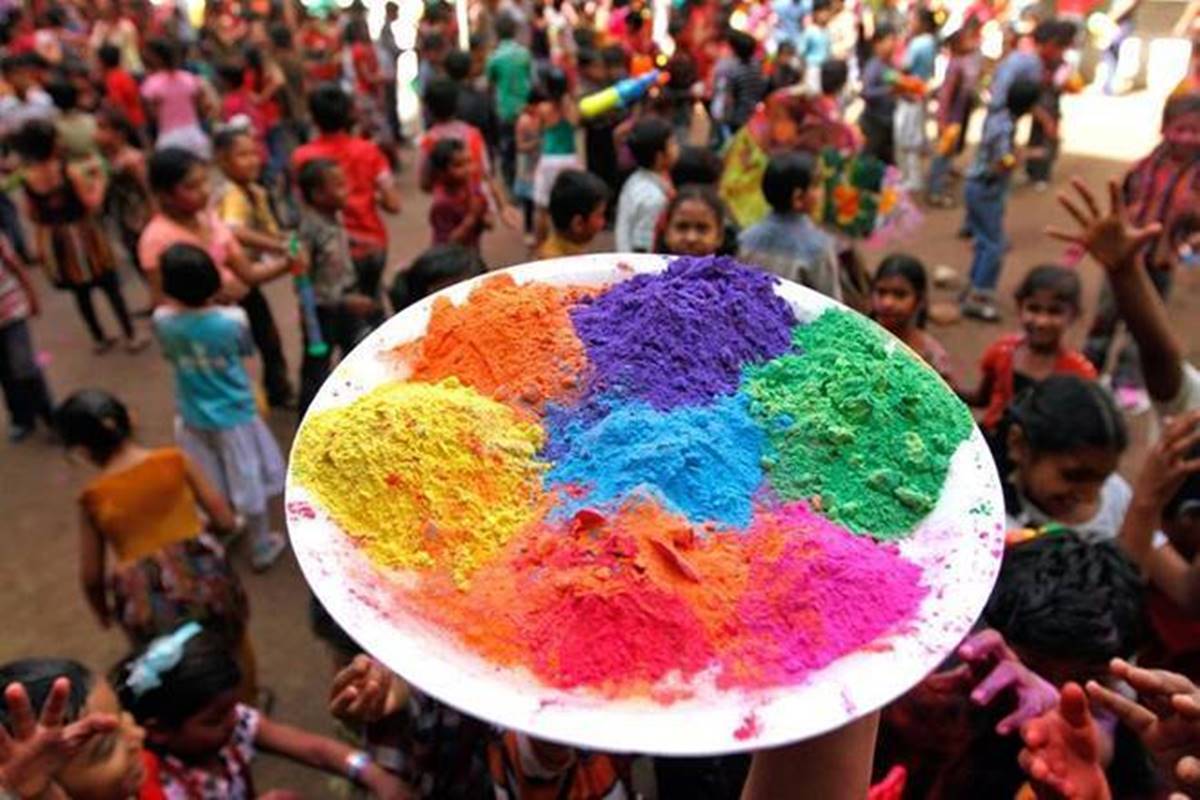
Holi is one of the major festivals of Hindus. It is mostly celebrated in South Asian countries, especially in India and Nepal. Holi is considered as one of the most revered and celebrated festivals on India and Nepal. It is celebrated in almost every part of the country. It is also sometimes called as the “festival of love” as on this day people get to unite together forgetting all resentments and all types of bad feeling towards each other. The great festival lasts for a day and a night, which starts in the evening of Purnima or the Full Moon Day in the month of Falgun. It is celebrated with the name Holika Dahan or Choti Holi on first evening of the festival and the following day is called Holi. In different parts of the country it is known with different names.
The vibrancy of colors is something that brings in a lot of positivity in our lives and Holi being the festival of colours is actually a day worth rejoicing. Holi is a famous Hindu festival that is celebrated with utmost joy and enthusiasm. The ritual starts by lighting up the bonfire one day before the day of Holi and this process symbolizes the triumph of good over the bad. On the day of Holi people play with colours with their friends and families and in evening they show love and respect to their close ones with Abeer.
On the first night of Holi, people light bonfires and throw roasting grains, popcorn, coconut and chickpeas onto them.
The next day, people of all ages go into the streets for fun and paint-throwing. Everyone gets involved!
Hindus have fun by smearing each other with paint and throwing coloured water.
The Nepali name of the Holi festival is Fagu Purnima. Nepalese celebrate Holi on the Falgun (February-March) i.e. the 11th month of a Nepali calendar on the day of the full moon. so, Fagu is named after Falgun month and Purnima means a full moon.
Fagu Purnima is a festival celebrated by Hindus hailing the arrival of the Spring season. The festival is all about colors, love, joy, excitement.
There are several legends describing how and why people started to celebrate the Holi festival.
The most popular story is between Lord Vishnu, Evil King Hiranyakashipu, king’s son Prahlad and his evil aunt Holika.
All the myth is connected to Prahlad who is a devotee to Lord Vishnu. Prahlad’s father, King Hiranyakashipu who was the evil king. In the arrogance of his strength, he started believing himself as God.
He banned the name of God in his Kingdom but his own son Prahlad defied Hiranyakashipu and continued to worship Lord Vishnu.
King Hiranyakashipu tried to kill his own son Prahlad in different ways but the evil king failed. Finally, his sister Holika, who had received a boon which makes her invulnerable to fire.
One-day Hiranyakashipu and Holika decided to take Prahlad to Pyre. Holika convinced Prahlad that she would protect him from fire. Holika who was invulnerable to fire entered the pyre with Prahlad so that he would burn to death.
But, by the grace of Lord Vishnu, Prahlad was untouched by fire but Holika was burned to death. The next day, people smeared the ashes over their heads and body as a celebration to the victory of good over evil.
Later these days, people use colors instead and it becomes a tradition to play Holi between people as a celebration.
It is believed that Holi was originally celebrated to protect general people from different diseases that happen while changing the season from winter to spring.
Traditionally, the colors used in Holi were made using extracts of flowers and Herbs like Neem, Tumeric, Mehendi, Kumkum, etc. The natural colors used to work as Ayurvedic medicines.
The medicine was used to cure high fever, skin diseases, and in fact, the color is best for the skin.
But nowadays, synesthetic colors are used in the Holi festival which is made using dyeing agents and other chemicals. The synesthetic colors have lost the medical value of Holi. But nevertheless, people enjoy the Holi festival.
Children start to play with colors a week before the actual Holi festival begins. A lingo (a long bamboo stick) is raised in Basantapur Durbar Square in Kathmandu and wrapped in clothes with various colors (also known as Chir).
The day before Holi, the long bamboo log is taken down and the chir is burnt, signaling the start of Holi. This tradition is known as Chir Dahan or Holika Dahan, symbolizing the end of Holika.
The Holika Dahan is also performed in different town squares and villages by burning wooden logs to celebrate the victory of good over evil.
Although Holi is mostly associated with colors and water games, this is an important part of the festival too.
In Nepal, the Holi festival lasts for 2 days. people in the hilly region celebrate the festival on the first day of Holi and followed by Terai region people on the second day.
On the day of Holi, people visit around their friends and relatives’ houses and color each other, dance and drink for the whole day. Nowadays people throw water among each other. so the Holi festival is all about color and water.
Families gather in one place and enjoy food, music, including hard and soft drinks.
FACEBOOK COMMENTS